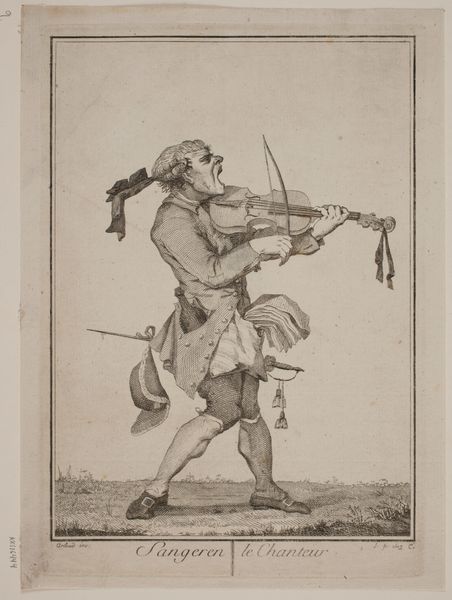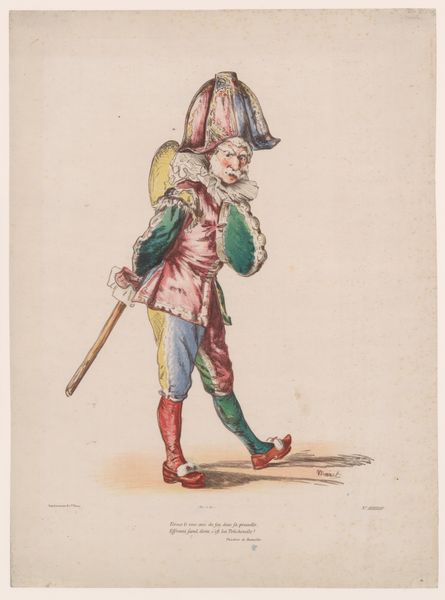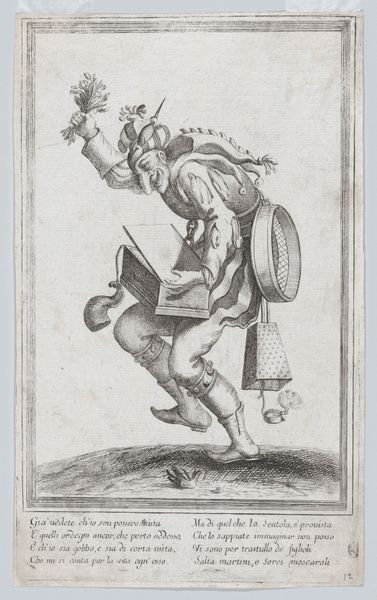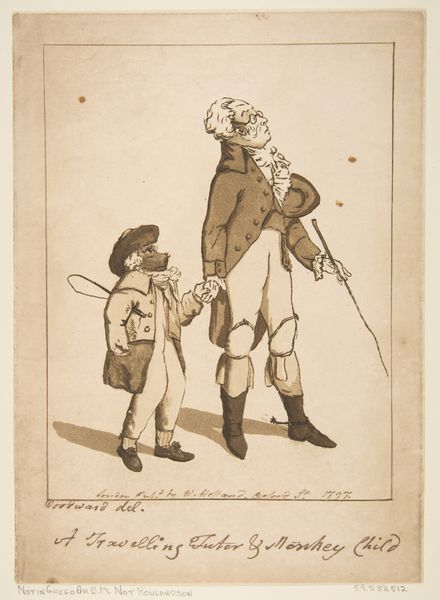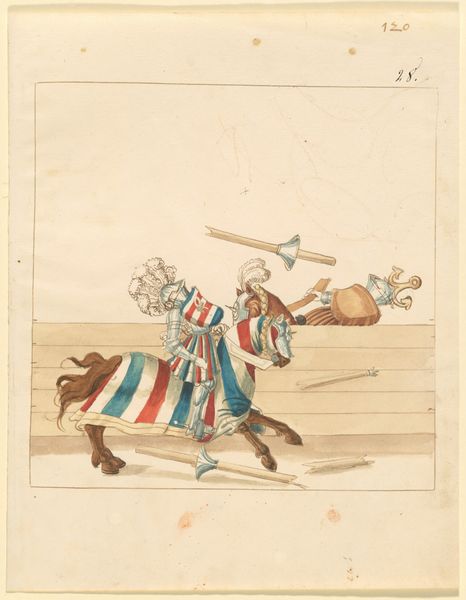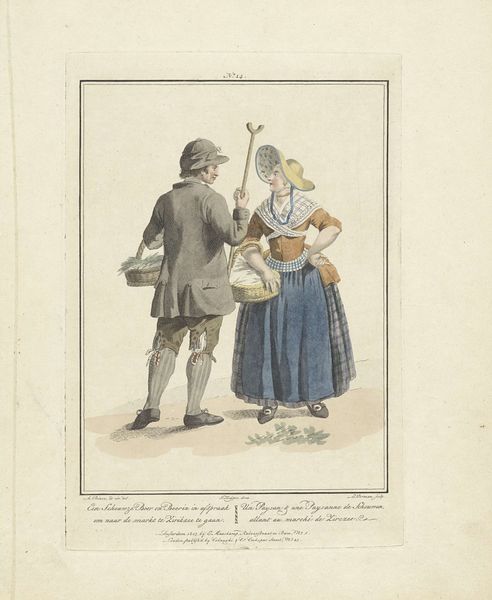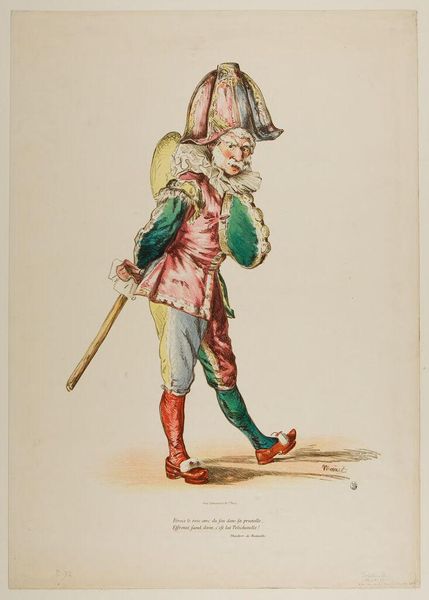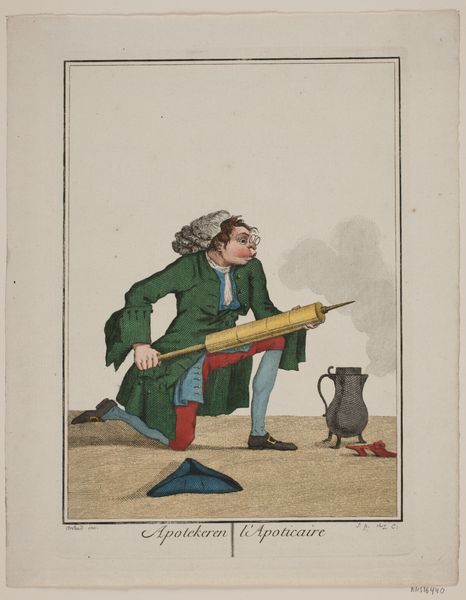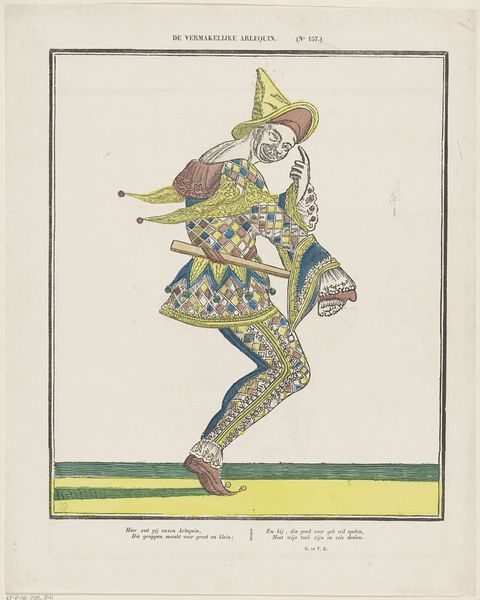
Dimensions: 222 mm (height) x 157 mm (width) (plademaal)
Editor: This is "Sangeren," or "The Singer," an engraving by Georg Christian Schule, created around 1778-1780. The character is belting out a tune with intense enthusiasm, maybe too intense. It's… comical, almost like a stage performance. What stands out to you the most? Curator: Well, immediately I'm drawn to the flamboyant exaggeration of everything. Look at the way Schule renders the figure—all frantic energy! That gaping mouth, those popping eyes… He's not just singing; he's *performing* for his very life, and that's the crux of caricature, isn’t it? It's poking fun, exaggerating characteristics to expose a truth, however silly or serious that may be. And this was created in the late 1770's. Rococo art, popular at the time, often aimed for light-heartedness and ornamentation, though maybe not *this* much ornamentation. What do you think this image satirizes about society or performing at that time? Editor: I hadn't considered the satire! The sword and hat seem out of place; perhaps it’s a comment on status? Or maybe performers who were trying too hard to seem important? Curator: Exactly! Or maybe the contrast of that outfit with the apparent lack of singing skill. Is this person a talented artist, or a total fraud? Schule is leaving the interpretation up to us. The point isn't the likeness, but the essence of what the singer *represents*, don’t you think? A very personal interpretation is key in satirical work. Editor: Definitely! I see it now. So, looking closer at the image has taught me not to take it literally; to look past the initial, over-the-top impression to discover deeper, less obvious ideas about that time. Curator: Precisely. It's all about discovering a story within a story, and reflecting on the enduring relevance of satire. Hopefully, we have opened people’s eyes to that.
Comments
No comments
Be the first to comment and join the conversation on the ultimate creative platform.
